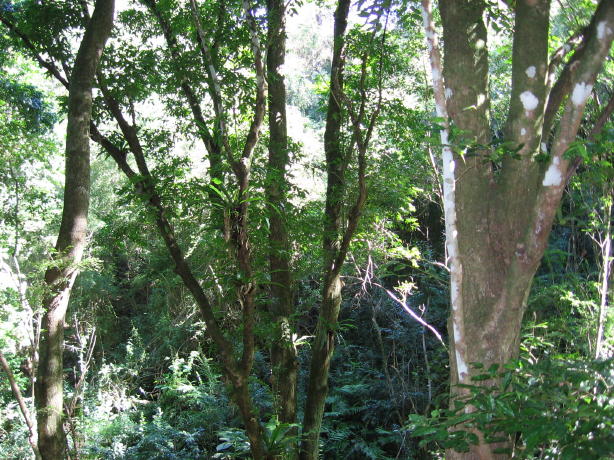Botanical name Corymbia
intermedia
A common name Bloodwood
Seedling
Not yet, one day I'll find one.Young plant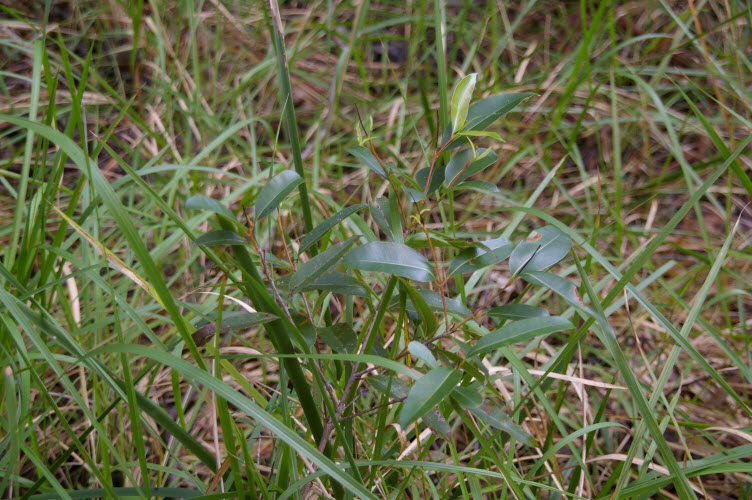
This one is probably at least 4 or 5 years old, still only 30 cm tall. Corymbia intermedia shoots are a favourite Swamp Wallaby food. I caged this one a year or two ago, I'll put the result up soon.
The mother tree is the Reasonably Mature tree pictured further down the page, it is about 20 metres away from here, up hill to the upper left.
Unmolested Bloodwood seedlings put on growth quite fast. I don't feel like I'm depriving the Wallabies of food, they also love both types of Privett, small seems to be preferred over large leaf.
There is plenty of low small small leaf privett they have been grazing on perhaps 30 metres away on the hill side under a dense canopy of Tallowood, Turpentine and some Willow Leaved Bottle Brush.
Juvenile
I have some of these not far from the house, coming soon.Reasonably mature
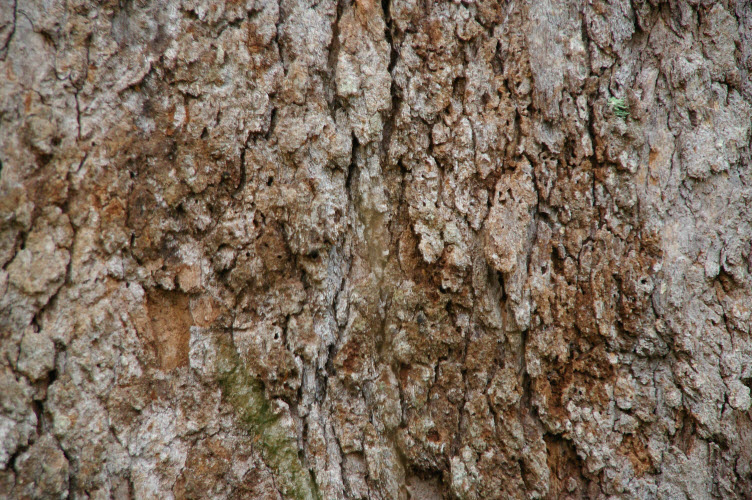
The bark is quite soft and spongy but not flakey
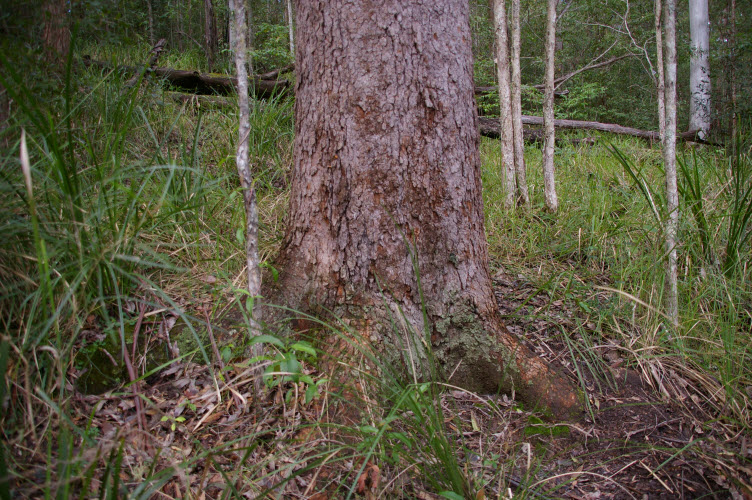 Bloodwoods
do get a lot bigger than this one.
Bloodwoods
do get a lot bigger than this one.You can see there has been some erosion on the down hill side of the trunk. Water eventually cascades down the trunk when it rains.
The 5 saplings around the Corymbia intermedia are Callistemon salignus (Willow Leaved Bottle Brush), unchallenged they can become quite significant bushy trees.
On larger specimens of Callistemon salignus branches can snap after periods of good growth. This lets the light in for everything else.
The grass to the right of right most Callistemon trunk is Gymnostachys anceps (Settlers Flax).
Behind the felled trunk is a mixture of young Syncarpia glomulifera (Turpentine), with taller young Rhodamnia rubescens (Brush Turpentine) behind. The ground drys out more here toward the ridge top, though there is a soak about 8 metres away to the left and down. At the thick end of the felled trunk is a Eucalyptus microcorys (Tallowood).
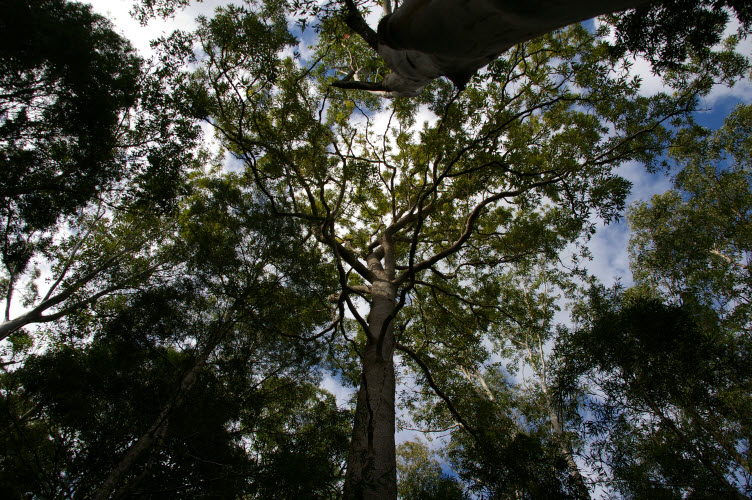
A stately tree. The shorter denser trees to the left are Callistemon salignus. The multi branched trunk to the left would be a Eucalyptus saligna, as is the trunk impinging on the top of the photo.
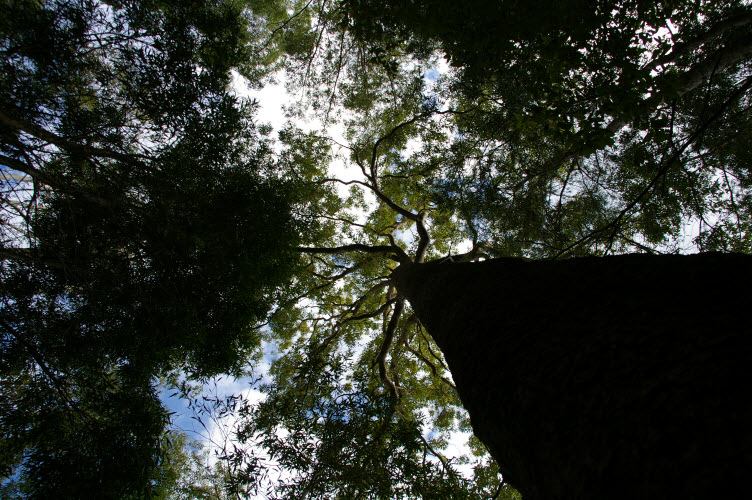 Just
another view. I find it hard to convey just how significant some
trees are are, and no, this is not a big one.
Just
another view. I find it hard to convey just how significant some
trees are are, and no, this is not a big one.I'm surprised this one was not felled in the last round of timber getting maybe 20 - 25 years ago, it would have been big enough then.
Most of our tall (as distinct from spreading) bigger "Gum trees" are double or triple trunkers, they weren't cut because each individual trunk was too small then.

